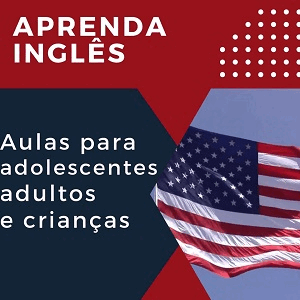Content
Short squeezes can introduce a lot of volatility into stocks and send share prices sharply higher. These squeezes offer opportunities for trading, but they often require different strategies and more caution than traditional breakouts. However, a doji on its own isn’t necessarily a strong signal, so you’ll want to make sure that you have a stop loss in place – and that you’ve confirmed any likely move. We introduce people to the world of trading currencies, both fiat and crypto, through our non-drowsy educational content and tools.
What is a doji wick?
A Doji candle is a type of candlestick formation that appears when the open and close prices are nearly equal and the shadows are sufficiently long. The horizontal line of the Doji pattern is referred to as the body, and the vertical line is known as the wick.
Some trading patterns are complex and hard to identify, while others are somewhat elementary. Nevertheless, simple patterns can have meaning in their own right. Doji is considered as most popular reversal candle and it is easy to identify as you can see in the above figure. Conservative traders can choose the next level up for their profit target, or if you believe a stronger trend will take over then you can look to the 50% or 61.8% areas. Finally, let’s examine what a doji trading strategy might look like. For this example, we’re going to look at trading EUR/USD using a combination of doji and the Fibonacci retracement tool.
Psychology About Doji
The word “doji” is Japanese for “the same thing,” meaning that two normally different prices coincide this time. Once you spot a doji, it’s good to look for confirmation before acting on it. Following a dragonfly doji, for example, look for bullish price action and strong trading volume to confirm a bullish reversal. You should also check that technical indicators like MACD and RSI point to a bullish reversal before trading based solely on a dragonfly doji.
You should consider whether you understand how spread bets and CFDs work and whether you can afford to take the high risk of losing your money. The below price chart for the UK 100 index shows several patterns https://www.bigshotrading.info/blog/what-is-a-pip-in-forex-and-are-they-useful/ that occurred near bottoms. Following the hammer, the price should move higher, which helps to confirm the pattern. On three of the examples, the price does move higher, and on one example, it does not.
How to Identify a Long-Legged Doji
However, by the end of the session, sellers resurfaced and pushed prices back to the opening level and the session low. Ideally, but not necessarily, the open and close should be equal. While a Doji with Doji Candlestick Pattern an equal open and close would be considered more robust, it is more important to capture the essence of the candlestick. Doji conveys a sense of indecision or tug-of-war between buyers and sellers.
Again, the doji is the key candlestick here, showing the moment that momentum began to turn. My book,
Encyclopedia of Candlestick Charts,
pictured on the left, takes an in-depth look at candlesticks, including performance statistics. A Doji is not as significant if the market is not clearly trending, as sideways or choppy markets are indicative of indecision. Indecision reigns, as neither the buyers and sellers are in control. Start your research with reviews of these regulated brokers available in , many have free demo accounts so you can preview their technical analysis features.
Doji After a Downtrend
In certain contexts, a doji candlestick could indicate that the price is near a topping or bottoming point. Despite the belief that a northern doji is supposed to be a bearish reversal candlestick, it acts as a continuation 51% of the time. The northern doji is just another doji candlestick pattern that means nothing at all even after price is trending upward. The candle appears often, ranking 6th out of 103 candles, where
1 is famous and 103 is unknown. This suggests that buyers and sellers both tried their hardest to take control of the price action. However, they were evenly matched, with no clear winner in the end.
- In this case, we could see if the next session takes the form of a green candlestick, which could be the resumption of the original bull trend.
- These indicate that there was significant price movement during the trading session, but ultimately, the market closed near its opening price.
- This indicates that during the period of the candle, the price moved sharply up and down, but closed at almost the same level as it opened.
- This type of candlestick is confirmed on a technical analysis chart when the opening and closing prices are almost identical.
- In conclusion, the Doji candle pattern is an important tool for crypto traders looking to identify potential trend reversals.
- What they have in common is that they are simple in structure, easy to spot, and not consistently accurate.
As a simple one-candle pattern, it can occur quite accidentally. Relying on the auction theory logic, we can say that the equality of the open and close prices signals the moment of indecision in the market. Both sellers and buyers are not sure at what price trades can be profitable. CFDs are complex instruments and come with a high risk of losing money rapidly due to leverage. 72% of retail investor accounts lose money when trading CFDs with this provider. You should consider whether you understand how CFDs work and whether you can afford to take the high risk of losing your money.
68.53% of retail investor accounts lose money when trading CFDs with this provider. Next, there is a pullback, and the price starts a new downtrend towards the neckline of the double top pattern, where the price meets support. Another long-legged doji appears at level 0.9746, which means market uncertainty and quite strong buying pressure. If the closing price is right in the middle, it could be considered a trend continuation pattern. In this case, one can always refer to previous candles to predict future trends.














